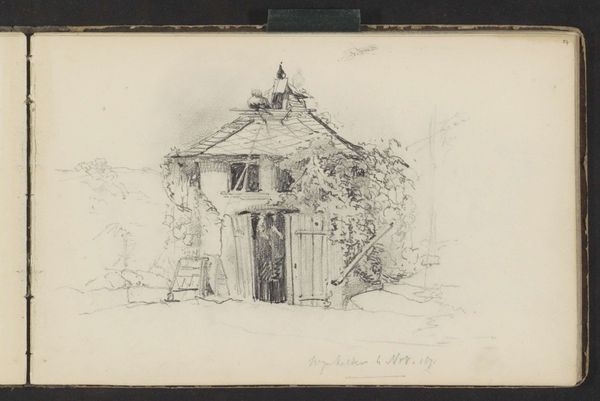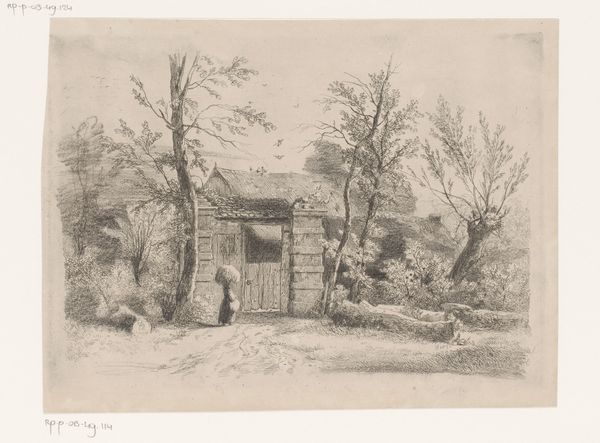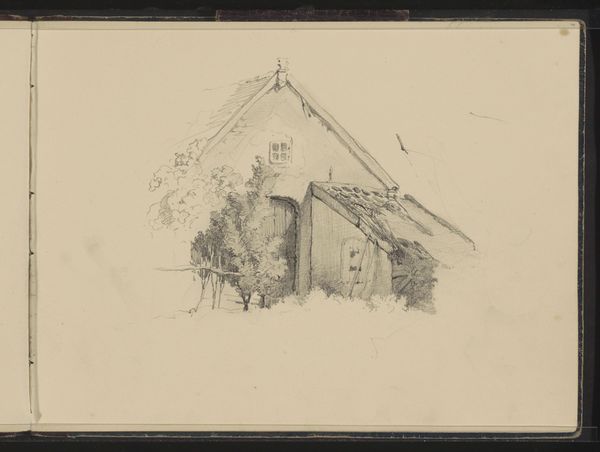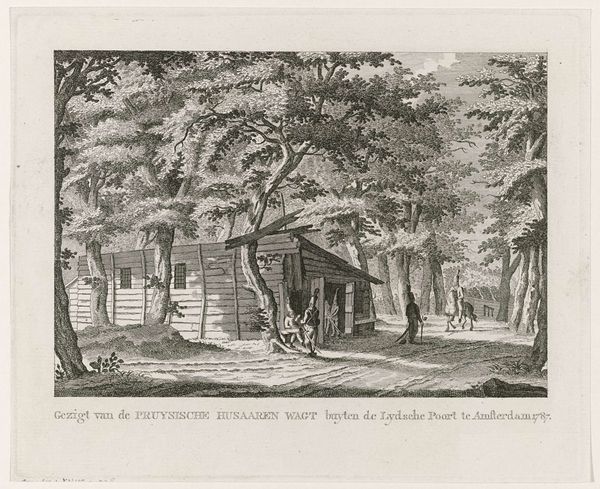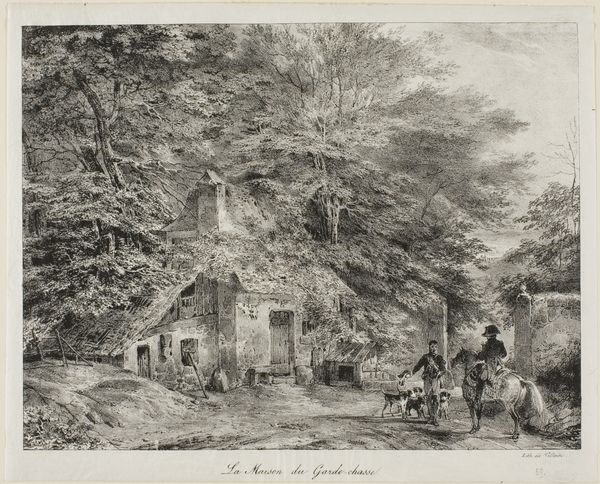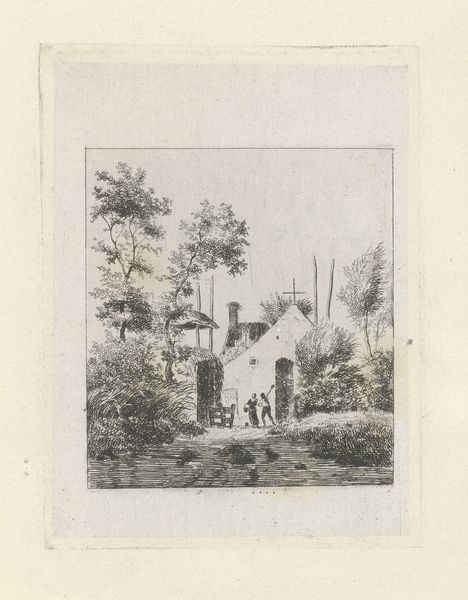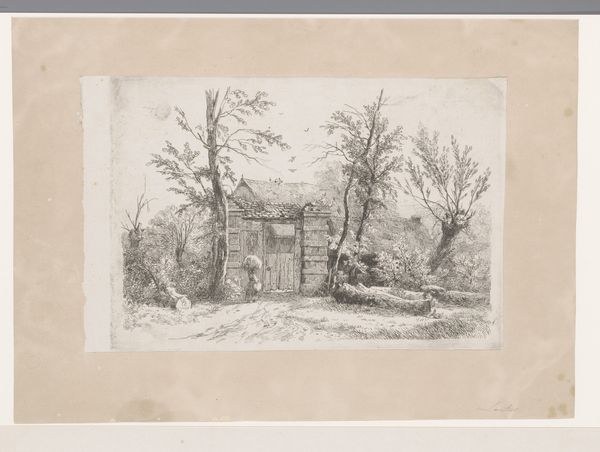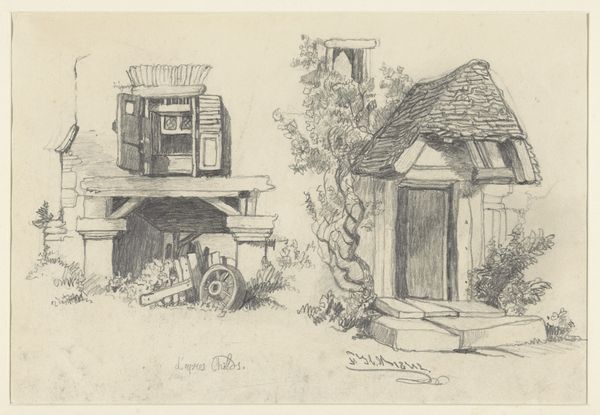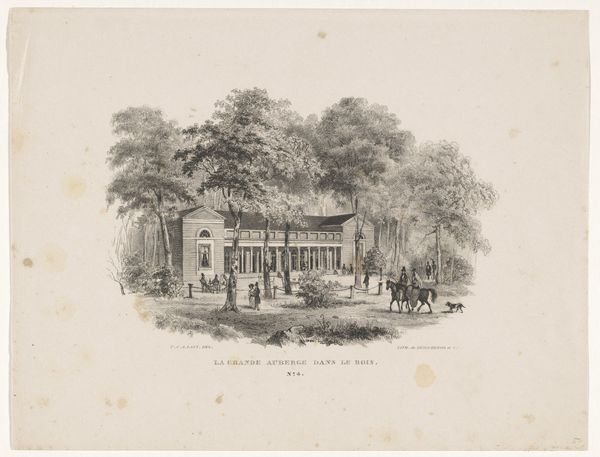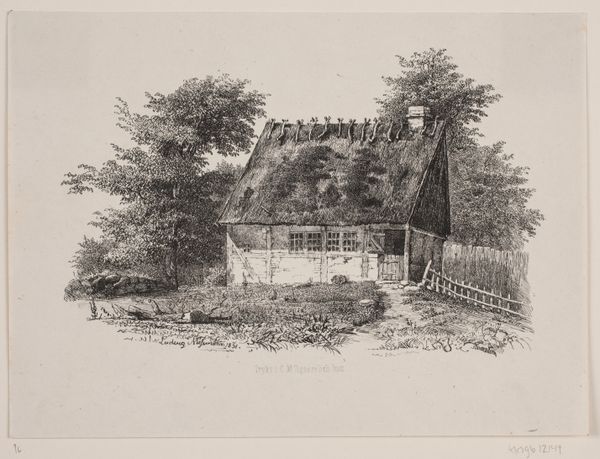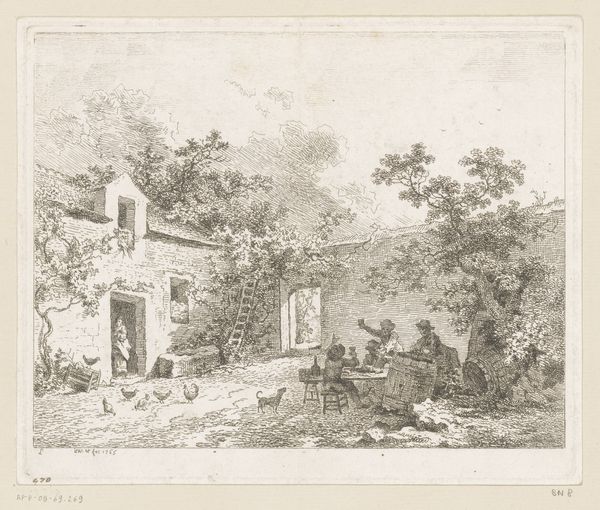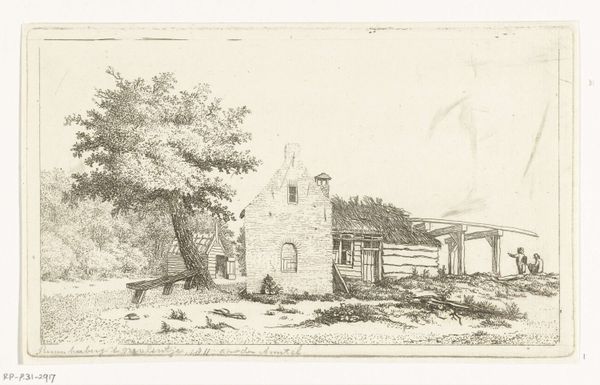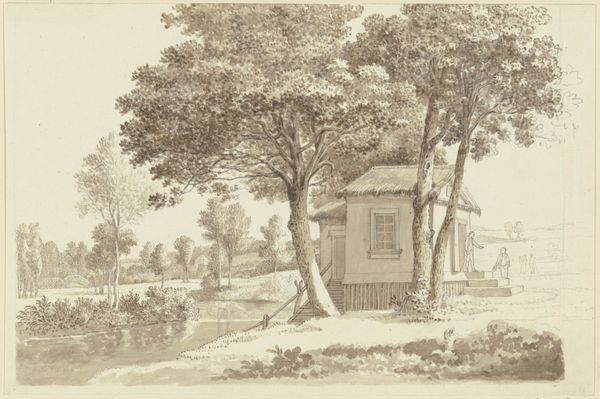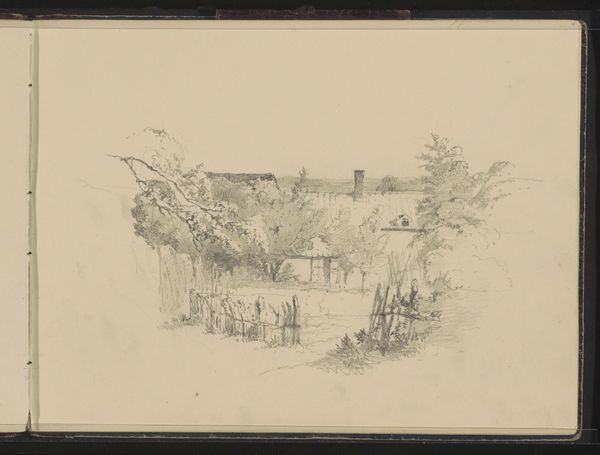
View of the Park at Versailles: Rustic Cabin n.d.
0:00
0:00
drawing, print, plein-air, paper, watercolor, ink, pencil, chalk
#
drawing
#
neoclacissism
# print
#
plein-air
#
pencil sketch
#
landscape
#
paper
#
watercolor
#
ink
#
pencil
#
chalk
#
watercolour illustration
#
genre-painting
#
watercolor
Dimensions: 242 × 316 mm
Copyright: Public Domain
Editor: This drawing is titled "View of the Park at Versailles: Rustic Cabin," by Antoine Pierre Mongin. It is undated, and uses pencil, watercolor, ink, and chalk on paper. I find the greyscale tones really striking; it feels like a captured memory. How does this work speak to you? Curator: The title positions this as a "view," a seemingly objective rendering, yet the soft, almost hazy treatment contradicts that. What you perceive as captured memory I see as carefully constructed imagery steeped in socio-political messaging. The park at Versailles was anything but a neutral space. Editor: What sort of messaging do you mean? Curator: The "rustic cabin" presents a very deliberate contrast to the opulence of the palace. Remember that this piece aligns with the Neoclassical period, where artists often used idyllic scenes to promote certain ideas about simplicity and the "natural" life. But within the context of Versailles, a symbol of royal excess, could this cabin also function as a subtle commentary? What does including a structure like that mean when we know what the palace stood for? Editor: So, you’re saying it might be more of a political statement than just a pretty landscape? Curator: Exactly. And think about *plein-air* sketching—painting outdoors, capturing a specific time and place. Mongin and his contemporaries were part of a growing artistic movement that began engaging more and more directly with landscape. Consider what it meant to go outside to look at the park. To study the location itself! The rustic aesthetic certainly romanticizes rurality. However, the actual location of this scene adds tension, because you just *know* where you are when seeing this image. Editor: I see. This pushes beyond just the face value. I'm thinking a lot now about how location can provide a framework of understanding, impacting the way imagery can be seen and its ability to carry ideas. Curator: Precisely. Examining art within its historical context opens up new pathways to think about what the intent or the final reception can be for its viewers!
Comments
No comments
Be the first to comment and join the conversation on the ultimate creative platform.
